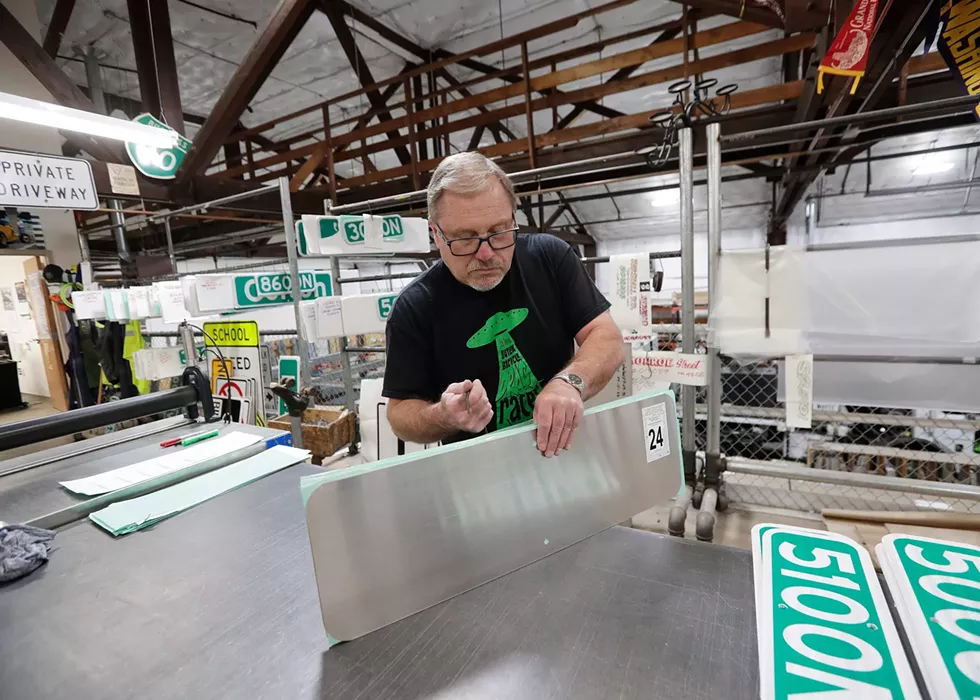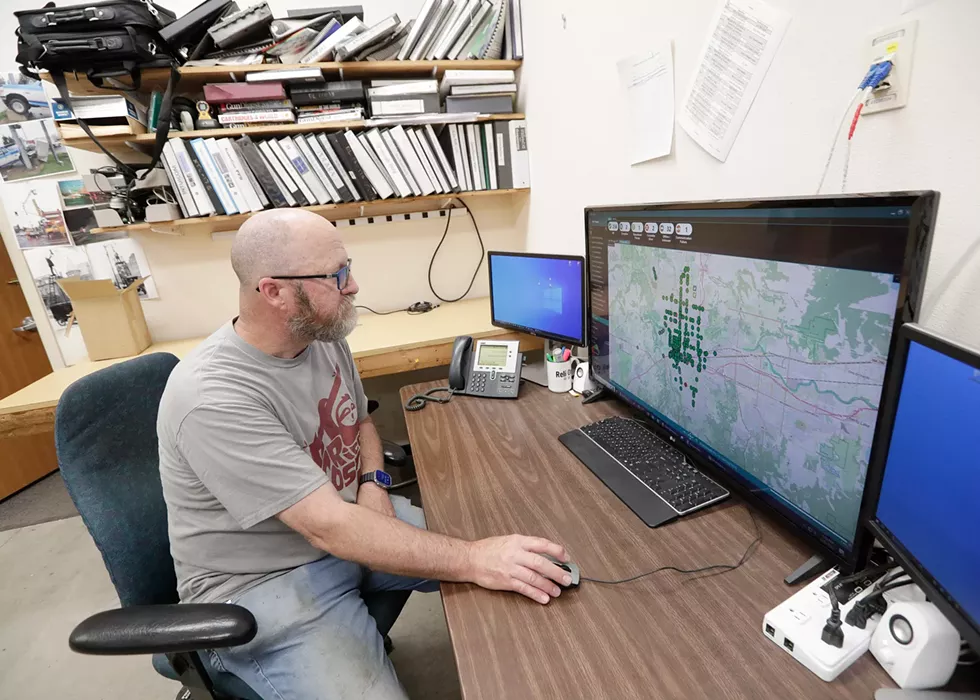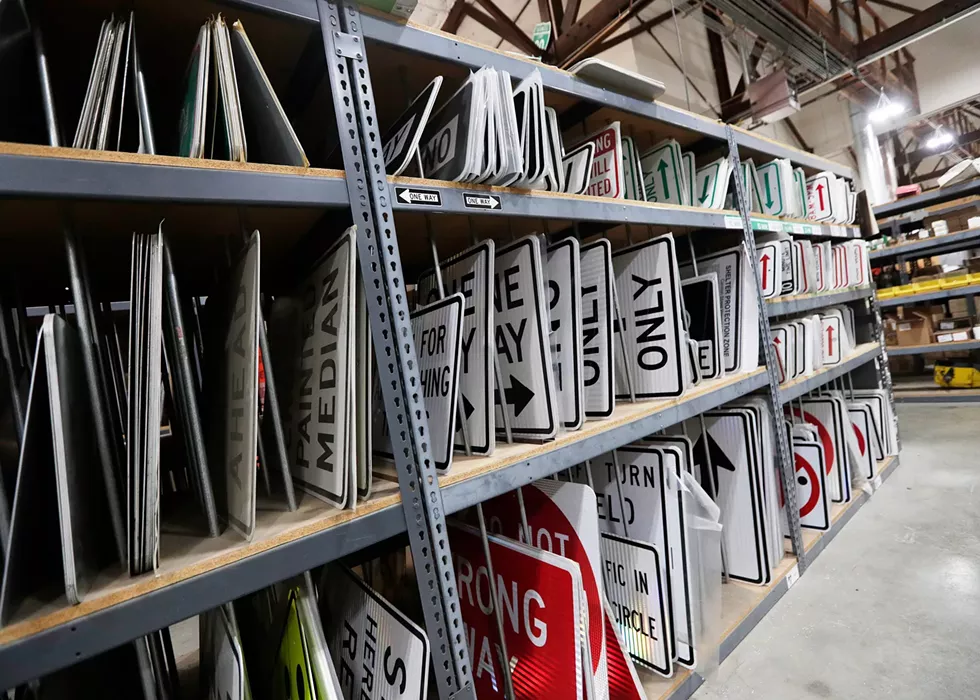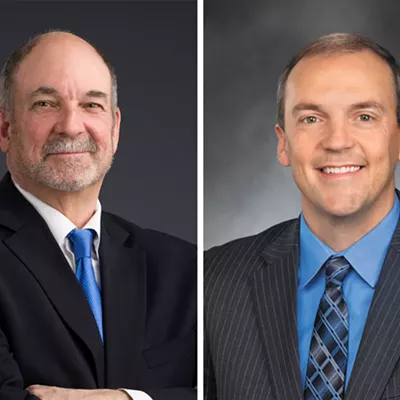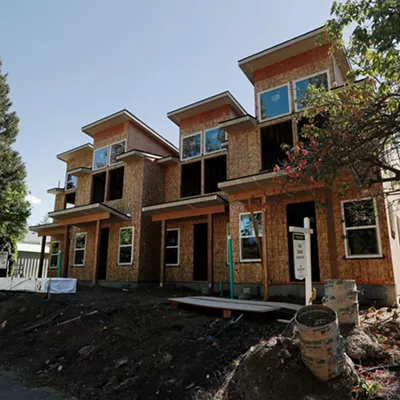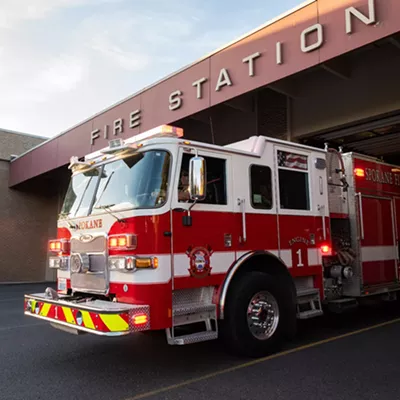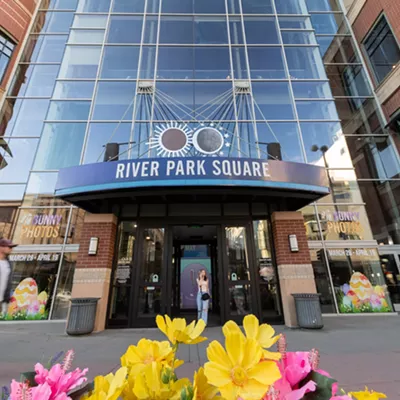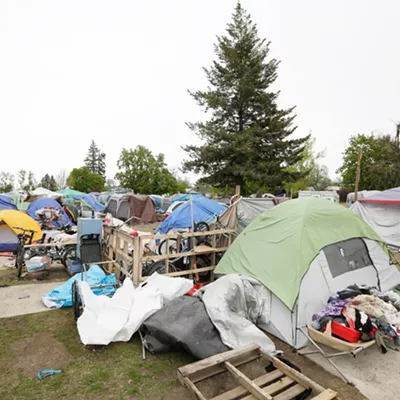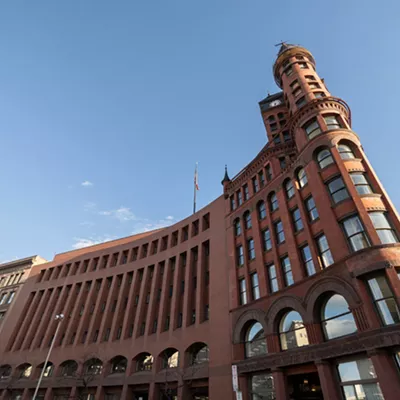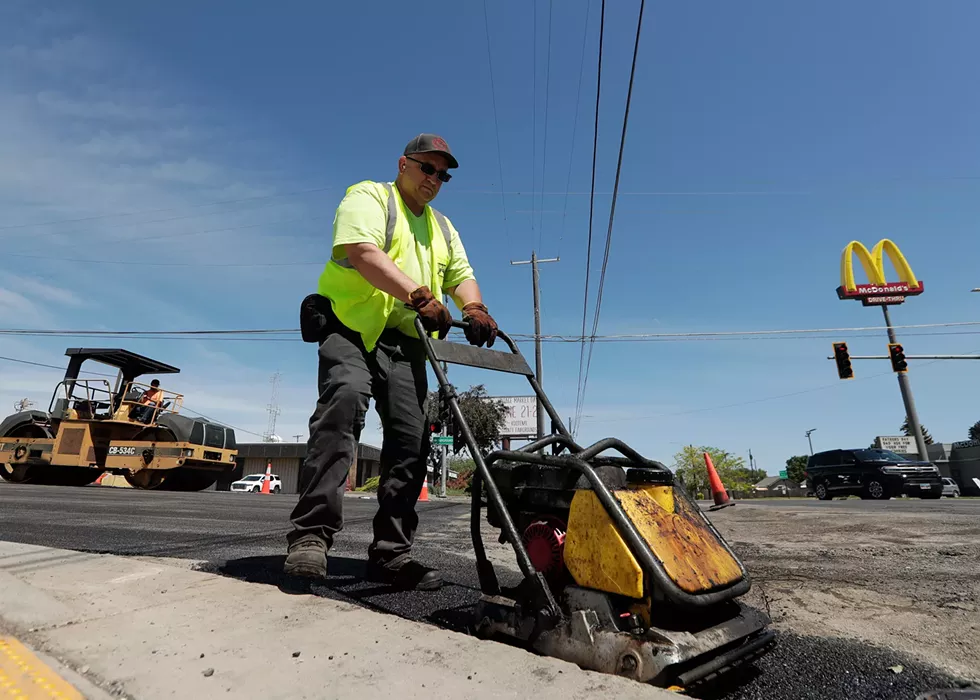
It's no secret that Spokane's budget is in a rough place.
The city is facing a $25 million hole in its general fund, and the structural budget deficit across all accounts is estimated to be nearly $50 million. There's no easy solution.
This spring, Mayor Lisa Brown proposed adding a massive property tax levy to the August ballot that would raise $192.5 million over five years to fill gaps in the budget and avoid layoffs. The idea of raising taxes was controversial, and in May, Brown decided to pull the levy lid lift plan, which would've cost the median homeowner an additional $323 each year. However, she says the city's financial problems are far from solved, and that a levy will still be necessary in the future.
City leaders are now in the process of a midyear budget review. There's lots of talk about "tightening belts," "sharpening pencils" and finding ways to make cuts while still maintaining the services necessary to keep the city running.
The looming deficit and debate over "essential" services raise questions about what a city is for. For all the complaints about wasted tax dollars, it can be easy to forget about the aspects of government spending that actually do work — the day-to-day maintenance and bureaucratic tasks that keep a city from falling apart. It's the work that keeps the water flowing and the traffic lights blinking; the stuff that's so essential you don't even realize it's there until it's gone.
Spokane is Washington's second-largest city — its government a complicated ecosystem of people and processes with a $1.2 billion budget and about 2,000 employees. Just making sure the trash is picked up each week can be a herculean feat of logistics.
To better understand the often-overlooked work that keeps the city running on a daily basis, we tagged along with workers who repair streets, respond to parking complaints, filter the wastewater, manage building permits and build street signs. This is a snapshot of the unseen work that goes into keeping a growing city of nearly a quarter million people running every single day.

311 CUSTOMER SERVICE
(555 calls answered per day)
Joshua Kent is dealing with a parking problem.It's late morning in Spokane's 311 customer service center on the ground floor of City Hall. Kent is at his desk, which has three computer monitors, a pour-over coffee maker, a poster of a tropical beach and a telephone with a frustrated citizen on the other end.
"I'm sorry to hear that," Kent tells the caller, with patience. "I'd be more than happy to look into that for you."
The man on the other end of the call explains that a black Hummer has been parked outside of his house in the Five Mile Prairie neighborhood for some time, seemingly abandoned. He reported it to the city close to three weeks ago and still hasn't seen any action.
Kent, a customer service supervisor with 311, has dealt with this before. Parking is "always a hot topic," he says.
Kent tells the caller that, unfortunately, parking enforcement isn't a swift process. An officer with code enforcement is going to have to take multiple trips out to the vehicle to verify that it hasn't moved and attempt to provide warnings before actually taking action, he says.
The man on the phone says he's a mechanic and jokes about taking matters into his own hands.
"Well, I wouldn't recommend that you sell parts off," Kent says with a laugh. "That might get you into some other problems that you probably don't want to deal with."
Spokane's 311 department answers an average of 555 calls like this every day. It's the city's all-purpose customer service hotline — the number people call to report problems and ask questions about basically anything related to life in the city.
"Every day is different," says Sascha Hoffman, another customer service supervisor. "You're never bored."
"...being able to help people with the problems in their lives — large and small — is the best part of the job."
311 is the number you call when your garbage isn't picked up on time, or if you need help with utility billing or signing up for park activities. It's also how you register a bike or request maintenance on a parking kiosk. People call to report potholes, illegal camping, graffiti, debris in right-of-ways, abandoned vehicles and a host of other issues. The department is staffed by 16 people.
"There's a lot to our job because of all the departments we assist," Kent says. "We support the whole city."
The average call time is two-and-a-half minutes, though Kent says that can vary wildly. The department also gets an average of 83 emails and 60 walk-in requests per day.
People sometimes call with problems or questions that have nothing to do with city operations. Hoffman says one woman calls regularly to ask what day it is. Kent says he's had a number of senior citizens call with questions like "What's the phone number for my bank?"Those questions aren't technically the city's responsibility, but staff do their best to help anyway. Sometimes people just want someone to listen, Hoffman says.
"They just want to feel heard," she says. "If there's something we can do to help, we do. Otherwise we just listen."
As the public's first point of contact with the city, 311 staff occasionally get caught in the crossfire when the city's politicians do something controversial.
"When you hear of a meeting or some sort of declaration that's been made, you're like 'Oh, that's gonna be a hot point,'" Hoffman says.
Hoffman says the current hot topic is the Riverfront Park Pride mural, which has been subjected to repeated vandalism this month. Some callers aren't happy about the idea of the city paying for anything related to the LGBTQ+ community. When those calls come in, Hoffman says staff try to explain the basics of how the mural is funded through tickets from the city's red light cameras. Staff sometimes have to transfer the calls to the mayor or City Council offices.
Callers occasionally get angry and blame 311 staff for things they can't control. But Hoffman says those calls are rare. Most people are really thankful that someone is there to help, she says.
"I always call us bartenders," she says. "Because people just tell us their problems all the time."
Kent and Hoffman say that being able to help people with the problems in their lives — large and small — is the best part of the job. A missed garbage pickup or a pothole on your street can be a big inconvenience, and it means a lot to people when someone is there to help fix it.
"I can hear the thankfulness in their voice," Kent says. "It makes me happy that I got to help someone have a little bit better of a day."
STREETS
(13 potholes filled per day)
When someone reports a pothole to 311, the information gets passed on to the city's Streets Department, which has up to four two-person crews assigned to pothole duty each day.The department filled 4,700 potholes last year, and 2,216 so far this year. It's a relentless battle.
Spokane's climate makes it uniquely susceptible to potholes and road damage. When temperatures drop below freezing at night and then rise during the day, it creates a freeze-thaw cycle that causes water underground to expand and contract. The city is built on top of an aquifer, which also presents unique challenges.
"In a lot of areas, we've got water attacking us from both directions," says Jared Thomas, the Streets Department manager. "You've got the surface water, and then you've got water coming up from the ground. And that's the killer of the streets."
The department prioritizes potholes based on the level of severity citizens report to 311. Crews aim to respond to the worst potholes — known as "level threes" — within two business days of them being reported.
Thomas will sometimes get calls from people asking why Spokane's streets don't look like other cities in warmer areas.
"I'm like, 'Yeah, it's hot all the time in Arizona,'" he says. "'They aren't dealing with what we're dealing with here.'"
It's midafternoon, and Thomas is standing on North Havana Street, just off Sprague, where a city crew is working on a grind and overlay project. The sun is high, and you can feel heat radiating off the fresh asphalt.
Grind and overlay, also known as milling and resurfacing, involves grinding off the top two inches of a distressed street and replacing it with a fresh layer of asphalt. City crews complete about 12 miles of grind and overlay work each construction season, Thomas says. If the base of a street is strong, a grind and overlay project can extend its life by 15 to 20 years, he says.
Another city worker pulls up next to Thomas in a truck and explains that the project ran into an issue earlier in the day, when, after tearing up the road, workers discovered an outdated style of vehicle-detecting pressure plate buried under the street.
The old pressure plates were an unexpected challenge, but the crew on Havana Street still managed to dig them out and install the modern, copper wire loops the city uses to detect cars through magnetic fields and send signals to traffic lights.
Most Spokane traffic signals run on copper loops in the ground, but some intersections use camera-detection technology.
Byron Vasecka, a signal foreman with the city, can monitor those cameras in real time from the Streets Department's signal room. There, a computer screen with a live map displays the status of traffic lights across Spokane.
"It's kind of neat," Vasecka says, pulling up a live video of cars waiting at the intersection of Division and Francis. "We can pull up reports with the software, we can get movement counts, we can get all kinds of stuff."
The city of Spokane operates about 270 traffic signals, Vasecka says. The number is growing every year.
Down the hall from the signal room, Dan Martin is working on a more analog form of traffic management: street signs.
Martin is the city's sign painter. You've definitely seen his work: He's been with the department for 32 years, and he's the man responsible for creating almost every street sign in the city.
The city buys stop signs from a third party (it's cheaper), but pretty much every other type of sign is made in-house by Martin. He makes the signs for street names, speed limits, one-way roads, U-turns, pedestrian crossings, dead ends, no parking areas, road closures, railroad crossings and much more.
"Our inventory is right up around 100,000," he says.
The city tries to replace all street name signs — known as "D3s" — at least every 15 years, Martin says. If a sign gets damaged or stolen they'll replace it immediately. Whenever the city does a major repaving project, they'll try to replace every sign in the area that's at least four years old.
That means Martin ends up making around 4,000 signs for the city each year. About half are printed using a computer plotter, and half are made using a silkscreen printing method, he says.
The Streets Department has about 100 employees. Thomas, the manager, says about 60 work on the maintenance side, while the rest are split between signals and lights, signs and markers, and engineering.
"I never would have thought how much went into streets," Thomas says. "It takes a lot to keep a city running."
WASTEWATER
(34 million gallons recycled per day)
When a site is chosen for street maintenance, workers will send out a notice to other city departments in case they have infrastructure in the area that might present challenges. It's especially important for the city's wastewater and water departments."All their infrastructure runs in the streets," Thomas says. "We work with those departments pretty closely."
There are 871 miles of sanitary sewer lines and 363 miles of stormwater lines running beneath Spokane's streets. They lead to the city's Riverside Park Water Reclamation Facility, which sits on the edge of the Spokane River in northwest Spokane.
The complex is the largest of its kind in Eastern Washington — a feat of engineering that sees more than 34 million gallons of wastewater from Spokane's toilets, sinks and showers treated and pumped into the Spokane River each day. It also handles stormwater, the rain and snowmelt that runs off city streets.
The plant follows the rhythms of the city. The flow of water entering the facility peaks in the mornings when people are showering and getting ready for work. It dips during the afternoon, and then peaks again in the early evening when people return home.
When the wastewater first arrives at the plant, it's sent to the headworks building, where it is pumped through a series of perforated plates designed to filter out objects larger than 8 millimeters.
The room smells like chemicals and sewage. Baby wipes, rocks, and unidentifiable clumps of green and brown sludge are splayed out on a series of metal screens. If you've ever flushed something down the toilet that wasn't supposed to be there — a condom, a plastic bag, a goldfish, a cotton swab — it probably ended up here.
"We've gotten rubber duckies in there," says Kyle Arrington, the interim manager of the wastewater plant.
The filters can be sped up in case there's a big surge in stormwater entering the plant, but right now, the dregs and sludge of an entire city are rotating at the speed of a supermarket rotisserie chicken spinner. It's kind of mesmerizing.
"I used to have to sample these all the time," Arrington yells over the roar of machinery.
After the solid objects are filtered out, the wastewater is sent to grit basins, which remove the heavier solids like eggshells, sand, coffee grounds and gravel that made it through the filters. The facility removes about 300 tons of debris each year.
From there, the wastewater is sent to primary clarifiers — massive 1.2 million gallon tanks that slow the flow of water and allow remaining solids to settle at the bottom and concentrate.
The clarifiers were covered in 2013 to reduce odors for the people who live nearby. The wastewater team has also taken steps to reduce light and noise pollution from the plant, which is staffed by about 36 people, Arrington says.
"We want them to not even know we exist," he says.
Some parts of the plant have a musty, chlorine-tinged odor that's noticeable at times, but never unbearable. Walking through the plant on a warm June morning, it's easy to forget that the bodily waste of a quarter million people is pumping beneath your feet.
After the primary clarifiers, the water moves to large open tanks called aeration basins. At this point, the water is light brown and foamy.
"We call this mixed liquor," Arrington says.
The basins pump air into the water to help with denitrification. It's a delicate chemical process — like a "giant petri dish," he says. "Really, we're converting that ammonia into nitrogen that goes into the atmosphere, as well as destroying all the volatile compounds and organics and things that could be in there."
Arrington studied microbiology in college. While he explains the intricacies of the chemical process, another worker tests the pH and dissolved oxygen levels of the water in the basin. The facility has a full analytical laboratory on site, and regularly sends test results to the state Department of Ecology. Researchers can also test the wastewater to see how prevalent diseases like COVID-19 are in the community.
The chemicals people put in wastewater are a constant concern, Arrington says. Cleaning supplies, pesticides, cosmetics, food packaging and pharmaceuticals all present challenges for the water quality. Residents can find resources for how to properly dispose of various chemicals and pharmaceuticals at my.spokanecity.org/solidwaste/hazardous.
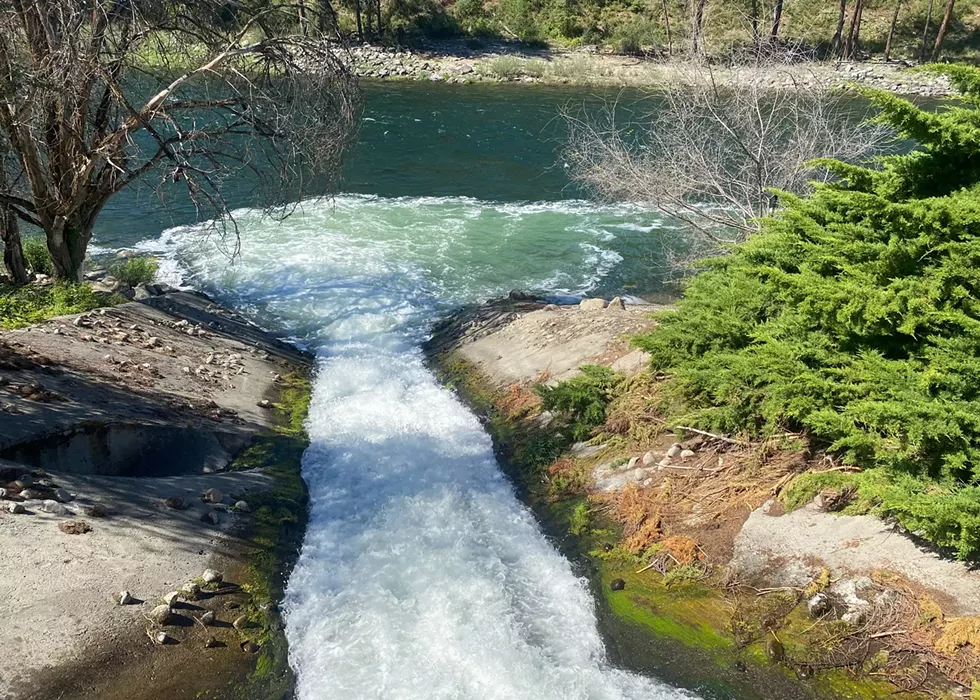
"There's a lot of chemicals that we're worried about now, but it's hard because they're so prevalent in the community," he says. "We sample for a lot of things, but you have to know what you're looking for before you analyze it."
After the aeration basins, the water moves to the secondary clarifiers, which are open to the air. A layer of sludge settles at the bottom, and the water on top appears clearer.
Several ducks — real ones, not rubber — are swimming in the secondary clarifiers, seemingly unbothered by the smell. It's a strange sight.
"We always have ducks in there," Arrington says. "Makes you think differently about eating duck a little bit, but they tend to enjoy it."
After the secondary clarifiers, the water moves to the membrane facility for what's known as "next level treatment." The facility is a recent addition to the wastewater plant that went fully online in 2022. It has more than 4,000 modules, each one packed with more than 6,000 tiny fiber membranes smaller than a human hair. The water is pumped through the membranes to remove heavy metals, PCBs and phosphorus.
After the membranes, the water is pumped to contact basins for final disinfection. Then it goes to what's known as the "outfall," where it gets pumped into the Spokane River.
The final stage in the process is surprisingly quaint. After flowing through hundreds of millions of dollars of machinery, the water enters the Spokane River through what almost looks like a natural waterfall. It's mossy and covered in rocks — a return to nature.
"I'd fish there," Arrington says, watching the filtered water as it flows into the river.
The reclamation facility has changed a lot since it was first built in 1958. Spokane is growing quickly, and workers have added numerous pieces of new equipment to keep up with the growing demand.
"You always need redundancy as the city grows and as we get more flow," Arrington says. "The work never stops, you can always make it better."
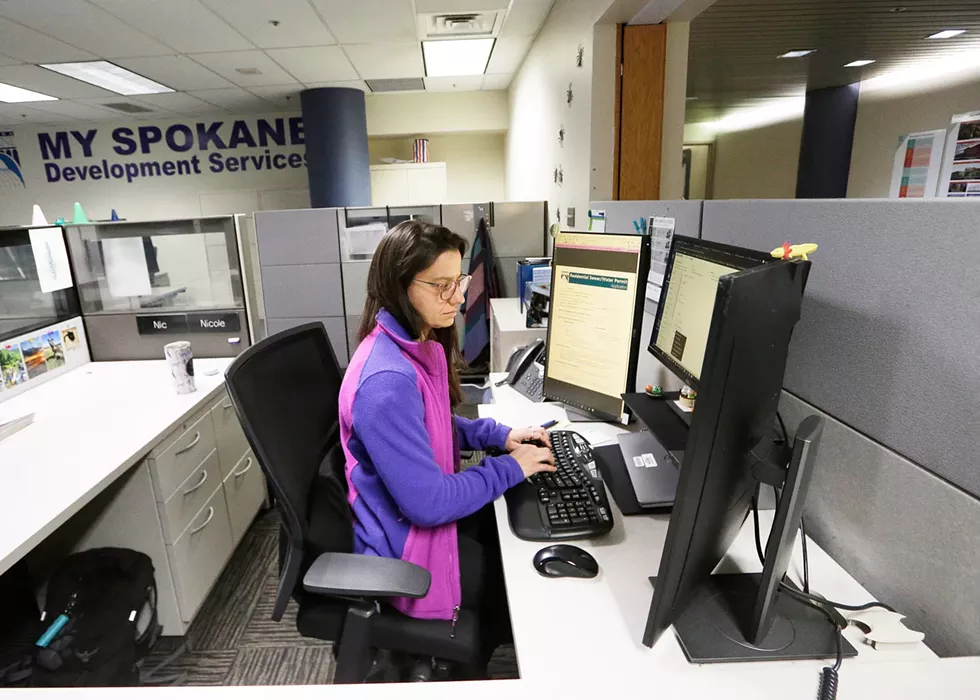
BUILDING PERMITS
(23 residential construction permits issued per business day)
If you want an up-close view of Spokane's growth, look no further than the city's Development Services Center, which is responsible for reviewing permit applications for new building construction, interior remodeling and a host of other projects."It's a fascinating perspective of the city," says Nicole White, a permit technician.
White is responsible for reviewing the permit applications that come in to make sure they're compliant with a variety of state and local building codes. She handles everything from swimming pools, decks, fences and signage on new businesses to backyard units and multifamily conversions.
The 57-person department has had an incredibly busy year. In 2023, the permit team processed 1,340 residential unit permits, the highest number on record since 1995, and a 56% increase over the prior four-year average.
"Opening up the zoning allowed a lot of people to build and try different things," White says. "We've had to evolve and adapt our processes to handle those."
The team has processed, reviewed, inspected and answered questions about a "truly magnificent" volume of permits, says Brian Walker, a city spokesperson. In May alone, the department issued 514 residential construction permits, an average of 23 per business day.
People can submit permit applications online or in person. Navigating the online permitting process is sometimes challenging for residential homeowners, White says, so it's often helpful for people to come in person to the department's office on the third floor of City Hall to get their questions answered.
The city's permit team is there to "make sure things are built safely so the next homeowner doesn't end up in a situation where they're unsafe," White says.
It's late morning, and White is inspecting an application that just came in for a residential sewer repair.
"We used to have the actual physical sewer card files," White says. "Sometimes we have to go back to the 1905 sewer card and try to interpret cursive from 100 years ago. It's cool to see that history."
Building codes have been around for a very long time. White notes that the "Code of Hammurabi," written around 1750 B.C. and named for a Babylonian king, is considered one of the first written examples of a legal building code. It declares, among other things, that if a builder constructs a home that collapses and kills the owner, the builder shall be put to death.
Spokane's building codes are far less draconian. But the main idea — that a codified set of rules can ensure safe living standards — is much the same.
"From hundreds of years ago, even thousands, we were creating codes to make sure that people were safe," White says.
The amount of time it takes to get a permit approved can vary a lot depending on the project, but it's typically about four weeks for commercial applications and two weeks for residential. White says she's heard from contractors who've worked in other cities like Seattle who were impressed by how fast Spokane's permit process is.
"Everyone here is very aware of the housing crisis," she says.
Reaching out early in the planning process is the best way to ensure a building's permitting goes smoothly, White says. People will occasionally complain about the red tape and say it feels like the city is trying to stop them from getting a permit, but that couldn't be further from the truth, she says.
"No one is trying to stop anyone, we're not out here just to get people," White says. "We're real people who will sit down and help you and listen and work towards a solution." ♦


